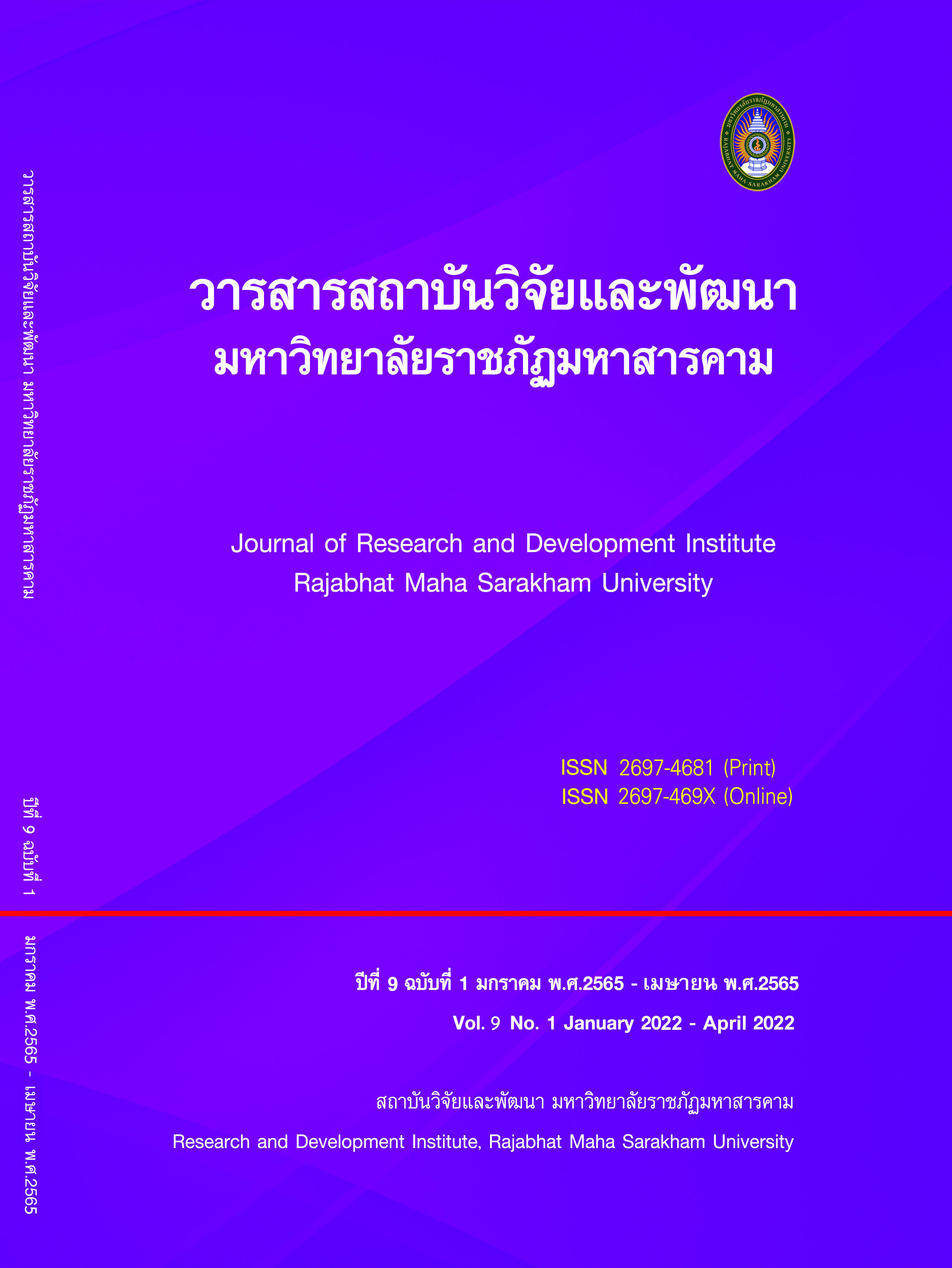The learning result of performance ability in Chaiburee dance Worship the Chao Mae Song Nang for grade 3 students by direct instruction model and video lessons
Keywords:
Chaiburee Dance, Chao mae song nang, Direct instruction, Video LessonsAbstract
The purposes of this research were: 1) To study the learning Result of performance ability in Chai-Buree Thai dance of primary3 students, which uses the direct instruction model as teaching method together with video. We defined a criterion to analyze as 70% of the total number of students achieving a passing score not less than70% of full scores. 2) to study Primary 3 students satisfaction with the learning Result of performance ability in Chai-Buree Thai dance, which uses the direct instruction model as teaching method together with video. The design of this research was a Pre-Experiment Research by One-shot case study. In addition, the sample size of this study were selected by purposive sampling including 28 students from Primary 3, semester 1/2020 at Anubansaowaruk School, Bueng Kan Province. The research instruments used to study including 6 lesson plans. And the research instruments used to collect data consisted of 2 questionnaires which included the Thai dance ability assessment questionnaire and students learning satisfaction to the teaching method questionnaire. The collection data were analyzed by arithmetic mean, standard deviation and percentage.
The results found as following: 1) The result of the learning achievement found that overall students (28 students) achieved a mean score of 107.25 or 89.37 percent which is higher than the prescribed criterion. 2) The result of the students' satisfaction after the learning achievement had arithmetic mean 4.34, at standard deviation 0.12 which means that students were satisfied in high level.
References
Chotirat, W. (2018). “Developing learning achievements in the subject of dance-choreography by organizing zippa-style learning activities with video media for grade 6 students” The 10th Hatyai National and International Conference, P.1119 – 1133.
Joyce, B. and Weil, M. (1992). Models of Teaching. (3rd ed). Englewood Cliffs : Prentice-Hall.
Kumut, P. (1976). Research and Teaching Innovation. Bangkok: Srinakharinwirot University.
Ministry of Education. (2018). Basic Education Core Curriculum 2008. Bangkok: Ministry of Education.
Nonthaso, S. (2010). “The results of teaching activities using the direct teaching model towards academic achievement, initiative and student opinions Learning unit on creating workpieces from Microsoft Publisher 2003 program of Prathomsuksa 6 students at Khon Kaen University Demonstration School (Modin Daeng)” Journal of Education Khon Kaen University. Vol. 5, No.2, P.122-129,1.
Phubanchuen, S. (2018). “Development of learning management processes by using direct teaching methods together with peer-help techniques To promote competence in practical skills achievement and satisfaction in art subjects, dramatic arts for grade 5 students.” Journal of Education Mahasarakham University. Vol. 11, No. 2, P.211-221.
Downloads
Published
How to Cite
Issue
Section
License
Copyright (c) 2022 Journal of Research and Development Institute Rajabhat Maha Sarakham University

This work is licensed under a Creative Commons Attribution-NonCommercial-NoDerivatives 4.0 International License.
Articles that are published are copyrighted by the authors of the articles







